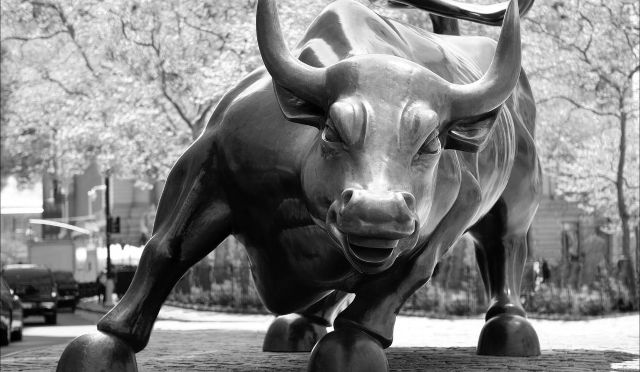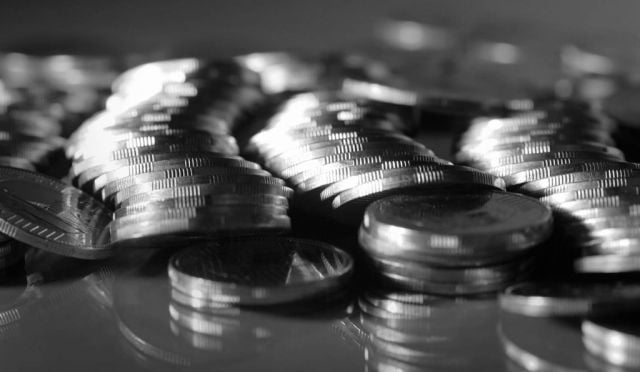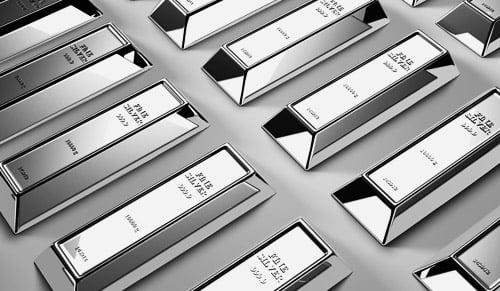Investing in Gold
For hundreds of years, investing in gold has been the preferred market choice in times of uncertainty, and a substitute for keeping money. In the 1990s gold traded at $250 a troy ounce; today the price is about eight times as much. Online, gold is one of the most widely traded commodities.
When trying to assess what the gold price might do next it’s key, as with all commodities, to look at supply and demand.
For most metals this means comparing how much of the metal is being mined to how much is being bought as, say, jewellery or ingots.
But this equation is complicated for the yellow metal. Gold is increasingly becoming a favoured investment for pension funds and speculators. In addition, central banks are looking to hold some of their reserves in physical gold.
Within this guide, we’ll take a look at how investors might go about investing in Gold. Our guide to investing in Gold will help you understand the following:
- How does supply and demand affect the Gold price?
- What effect do Central Banks have on the Gold price?
- How can I start investing in Gold?
- What are Gold futures?
- Investing in Gold with ETFs
How does supply and demand affect the Gold price?
In terms of mining, the biggest producer is South Africa, with mines that can go five kilometres into the ground and take almost a full day to travel through. China, Australia, the US, Peru and Russia are also big gold producers.
The level of how much gold is mined globally tends to go slightly higher every year but in the short term, production can get disrupted by strikes, accidents or problems with electricity supplies.
On the demand side nowhere is gold as beloved as in India, Pakistan and the Middle East where festivals and big family occasions are marked with lavish gifts of gold jewellery.
China is nudging up in importance as a key gold buyer, here the consumers prefer gold bars to jewellery, similarly as in the US and in German-speaking parts of Europe.
What effect do Central Banks have on the Gold price?
When it comes to central bank holdings, there has been a complete U-turn in the way central banks view gold in recent years.
The trend in the 1990s was to sell gold reserves – the Bank of England infamously sold some of its gold holdings when prices were at their lowest – but this has changed completely since the credit crunch and now central banks, particularly those in emerging economies, are consistent buyers of gold. This means at least this portion of their reserves remains stable and is not exposed to the volatility of currencies such as the dollar, yen or the euro which can change as monetary policies change.
How can I start investing in Gold?
Gold is also one of the most widely traded commodities by online traders. There are a number of ways to invest or trade Gold. The most popular include
- Futures
- Exchange Traded Funds
- CFDs
- Spread betting
What are Gold futures?
Gold futures are financial contracts that allow traders to speculate on the future price of gold without physically owning the metal. When you buy or sell a gold futures contract, you are agreeing to exchange a specified amount of gold at a predetermined price on a future date. It is estimated that only 3% of all futures contracts are delivered, the vast majority are offset before expiry or rolled to another monthly contract. These contracts are standardized and traded on exchanges like the CME Group, providing investors with a way to gain exposure to the gold market and potentially profit from price fluctuations.
Gold futures offer leverage, meaning that investors can control a large amount of gold with a relatively small initial investment or margin. This leverage can amplify potential returns but also increases the risk of losses if the market moves against the trader’s position. Trading gold futures requires a solid risk management strategy and a good understanding of the market, including factors that influence gold prices, such as economic conditions, geopolitical events, and currency fluctuations. You can learn more about trading gold with our free online trading course here.
Gold ETFs
Exchange Traded Funds are a cheap and easy way to invest in Gold. These instruments allow you to gain exposure to gold without the need to physically hold the metal. They can be traded like stocks and provide an easy way to include gold in your investment portfolio.
Gold ETFs
 | Core Physical Gold | Theme: Gold Ticker: LON:WGLD Currency: USD | Buy Here   |
 | Gold 1x Daily Short | Theme: Gold Ticker: SBUL Currency: USD | Buy Here  |
 | Gold 2x Daily Leveraged | Theme: Gold Ticker: LBUL Currency: USD | Buy Here  |
 | Gold 3x Daily Leveraged | Theme: Gold Ticker: 3GOL Currency: USD | Buy Here |
 | Gold 3x Daily Short | Theme: Gold Ticker: 3GOS Currency: USD | Buy Here |
 | Physical Gold – GBP Daily Hedged | Theme: Gold Ticker: GBSP Currency: GBP | Buy Here |
Sign up for our Gold news alerts for free and you will receive an email notification when we publish Gold related news
Latest Gold News
Gold price forecast for 2025: Can it go to $3000?
Our Market Predictions for 2025: Bitcoin, Gold, Mag 7, China and more
Don’t take your eyes off the gold price in 2025
CME Group preps launch of 1oz gold futures contract for New Year
Podcast: What is driving Gold and Silver commodity prices?
The Trump Effect: Wall Street goes on a buying spree
Gold price: four key observations from Metals Focus
Gold price passes major milestone: up 23% YTD in sterling terms
Western buyers are returning to the gold market
How to avoid buying fake gold
Central banks are quietly taking profits in the gold market
Royal Mint reports massive interest in gold and silver coin investment
Look beyond the Fed for second half gold price boom
Gold analyst predicts new record high for price before year end
Is it time to start investing in gold and silver bullion?
What’s the mystery behind the behaviour of the gold price?
Is the Gold price set to break new records this year?
Why is the Gold price losing its momentum?
Tabula’s gold ETC launch applies higher ethical standards to physical gold
Three markets to watch if the Israel-Iran conflict escalates
Gold hits historic high as market focuses on Federal Reserve, Israel bombing
Strange times in the gold market
What do analysts think about the direction of gold in 2024?
Will we see Gold driving on to new highs in 2024?
Who has got it right on gold: central banks or private investors?
What are non-farm payrolls?
Gold and Bitcoin running hot as market senses turning point
Gold outlook to Q3 2024: Galvanized by geopolitics
Defence still the best form of attack?
Investors buying physical gold as Middle East crisis ratchets up
Equities find few friends as corporate earnings season continues
Podcast: What next for Commodities with Nitesh Shah, WisdomTree
Gold price caught between the Fed and the Gaza strip
More Brits forecast to turn to gold and silver for wealth creation
Gold bullion owners hold onto their investment insurance as prices erase losses
The news cycle is dominating retail trading trends: Tesla, Gold, Nasdaq
Investors are buying gold bullion, but are selling silver
Gold market saw record central bank buying in first half
Gold continues slide as market anticipates another Fed hike
US Dollar and Gold in focus for CFD traders this week
Indian gold market balanced between monsoon and bargain hunting
Gold Token lists Ethereum-secured gold-backed token on Bitstamp
Central bank activity seen as key to gold market dynamics in 2023
Technical analysis on cash gold: can it break above $2000 and when?
Podcast: How will AI impact the financial markets?
Podcast: Nitesh Shah of WisdomTree talks to us about Gold and Silver
Central bank activity looks key for the gold price in 2023
Silver to gold ratio: why the long silver trade makes sense
Could gold hit new heights in the next few months?
Free Webinar: Interest rates and big moves in key FX pairs and Gold
Thinking about investing in precious metals to protect against inflation?
US economic data could drive gold even higher
TallyMoney reports massive growth in interest in gold accounts
Free Webinar: Can silver outperform gold in 2023?
Precious Metals market reflects uncertainty ahead of Fed meeting
Gold price beat many ISAs: more to come as investors buy in?
Podcast: A look ahead to markets in 2023 with Wael Makarem
Five top tips for buying gold jewellery as an investment
Gold trading: why we think the run in the gold price looks set to continue
Retail investors turned bearish on gold in November
Gold picks up speed as USD and crypto prices drop
Early signs of a gold bull market are appearing
Are commodity markets over-reacting to Putin’s mobilisation order?
Gold: why it still matters in the age of the Great Reset
Technical Analysis: the emerging case for gold appreciation
The origins of Bitcoin, control and the anonymity of Gold
Eurovision – dollar and commodity prices push Europe into recession
Gold, USD and savings beat Bitcoin and Tesla on performance in 1H 2022
City of London firm offers to pay staff in gold or cryptocurrency
Gold price vs US Treasury yields: how is this market changing?
Gold, commodities and value stocks are expected to grow in demand
The new FAANG stocks for a changing world
Gold expected to break above $2,000 as Ukraine conflict escalates
Massive trading activity in gold CFDs as world waits on Russia sanctions
Gold on break out as sabre rattling continues in Ukraine, pushing to $2000?
Gold trading: can precious metal break out in the near term?
Are commodity markets setting up for a defining year?
Our 2021 Picks: How did we get on in November?
The case for going long the gold price in November
Gold price: Could inflation fears set off the next bull market?
Gold price could go lower, creating a generational buying opportunity
CloseCross reports traders building short term long positions on gold
Warren Buffett, inflation and the gold price
Big investors are planning to go long gold this year
Glint closes £3m crowdfunding round for expansion of gold-based payments system
Gold market direction: Q&A with William Cai, Managing Partner of Wilshire Phoenix
FOMC preview: will sleepy markets be given a Fed wake-up call?
TrackInsight data: Investors buy silver ETFs, sell Bitcoin, cryptocurrencies
Will gold price reach the $2000 level again as investors return?
Bitcoin, gold and a quiet month for equities in June?
TrackInsight’s Global ETF Survey shows how investors are embracing thematic funds
With Gold grinding its way to $1800, where next for the yellow metal?
With all eyes on the FOMC meeting, is it make or break time for gold?
Gold price: Amid bearish sentiment, what can investors expect next?
The long- and short-term trading case for gold
Pro investors maintaining bullish stance on gold and silver prices in 2021 – new data
Are the markets starting to lose touch with reality, and should you be worried?
A macro vision for 2021: Inflation, Banks and the future of QE
Millennial investors are buying Bitcoin instead of gold – new data
WisdomTree launches new low-cost physically-backed gold ETP
Why this FOMC meeting could see significant volatility in markets
The 2020 Gold Rush is here
As predicted, gold price starts to respond to stimulus, weaker dollar
Bullion banks facing Comex gold crisis?
WisdomTree: gold price on track to reach new highs
Gold and silver ETFs attracting investment ahead of deflation
Can Bitcoin prove its credentials as digital gold in the current crisis?
Where is the gold price going to go next?
Why is the gold price falling in the coronavirus crisis?
US dollar rallies as banks and corporates seek liquidity in busy week
The Royal Mint Gold ETC set to list this week on LSE
Silver prices set to break upwards on virus fears?
Where is the gold price going to go next?
Four reasons why you should consider hedging with Gold
Buying physical gold versus gold sector shares
The Royal Mint to launch gold ETF in partnership with HANetf
US markets rally and gold price drops on China talks news
Gold to Silver ratio suggests Silver prices set to continue rise
Trading gold with ETFs
Gold hits 5 year high as geopolitical tensions remain
Commodities tipped to lead markets in 2019
Commodities markets will be the ones for investors to watch in 2019 as share markets begin to grapple with the…
Should you be investing in gold in 2019?
A quarter of UK investors view gold as the best investment opportunity over the next 12 months, despite a lacklustre…
Kinesis Money set to offer bullion trading via blockchain
Investors in gold and silver are looking for new ways in which to buy exposure to bullion market prices without…
Gold: Waiting for the Next Bull Market
After gold’s spectacular rally from $280 per ounce in 2002 to $1,900 in 2011, the past seven years have been…

















































